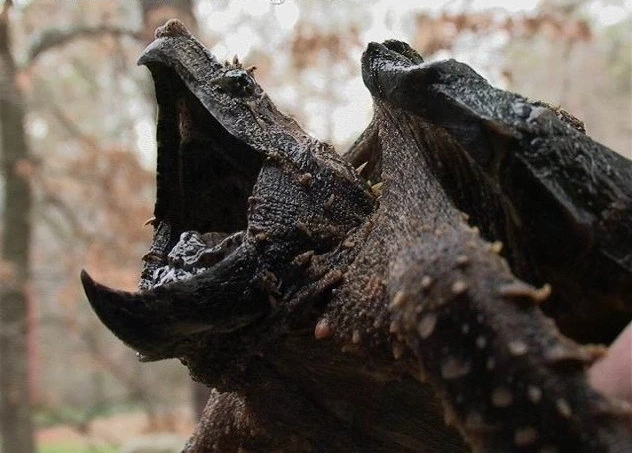The World’s Most Dangerous Turtles
Most people don’t think of turtles as being a threat to humans. However, there are a few species that have a ferocious bite that can lead to serious injury or death. Let’s take a closer look at turtles that are best to be avoided whenever possible.
Leatherback Sea Turtle

This turtle is not only the largest in the world, but it is also one of the most fearsome. They can grow to more than eight feet long and weigh in at over 2000 lbs. They also have a very sharp and strong bite that can shatter the bones of its prey and hulls of wooden boats. What makes the leatherback even more fearsome is the rows and rows of sharp teeth that extend all the way down the back of the throat and esophagus. While they are not known to seek out humans for prey, there have been reports of sea-going individuals getting crushed as they found themselves at the wrong place at the wrong time.
Alligator Snapping Turtle

This is the largest freshwater turtle in the world, and they can grow more than four feet long and weigh in at over 200 lbs. Some reports suggest that encounters with turtles that are double this size have occurred over time as well. They have a razor-sharp beak that shreds anything from bone to wood and even aluminum as their bite exerts thousands of pounds of force. While snapping turtles generally seek out humans for their next meal, many swimmers have been crushed, amputated and even drowned as a result of rare attacks.
Big-Headed Turtle

These river and lake-dwelling turtles can reach more than two feet in length, and they have a huge, distinctive head that can not be retracted into their shell. They compensate for this weakness by possessing a bony head along with a razor-sharp hooked beak that can pulverize almost anything that it grabs. They are nocturnal and fiercely protective of its territory and eggs. They hide by burrowing in gravel or sand along river banks and behind waterfalls and strike unwary prey if they get too close. Many unwary swimmers or bathers have lost a limb or foot due to an unfortunate encounter with these small but vicious creatures.
Soft Shell Turtles

These strange-looking creatures resemble a turtle in the front but have a body that flares out and flattens in the back. They tend to hide in sand and suddenly pounce on prey if they get too close. They have an extraordinarily hard bite that can shatter bone and amputate feet and hands. There are species that exist all over the world, and attacks on humans are not uncommon, but they are generally due to people stepping on them or posing some sort of threat.
Mata Mata Turtle

This turtle has a long neck and flat, spiny head in addition to a fearsome looking shell. They also possess two sets of razor-sharp teeth. Mata Mata turtes are river-dwellers that are not indigenous to North America yet. However, there have been reports of sightings in rivers and streams in the deep south and Florida. While no known attacks have occurred in the United States, many people have been seriously injured in rivers in South America after they crossed paths with this grotesque animal.
The most important thing to remember is that most turtle bites occur as the result of confusing humans with other prey. Turtles also will bite to defend their territory or if they feel threatened. Consequently, the best defense is to avoid getting too close to their habitats and giving them plenty of space while swimming.















